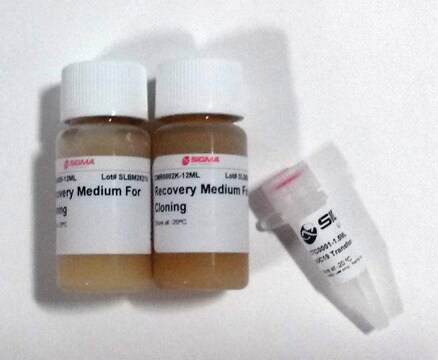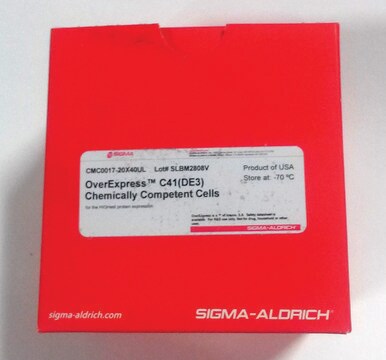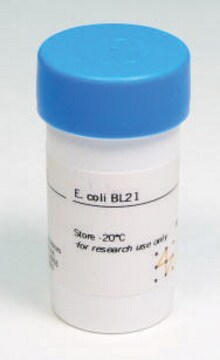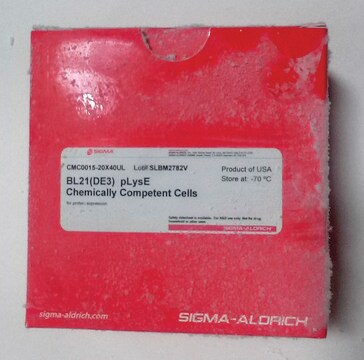CMC0016
BL21(DE3) Electrocompetent Cells
Escherichia coli, rod shaped
Sinonimo/i:
BL21 strain
About This Item
Prodotti consigliati
Nome del prodotto
BL21(DE3) Electrocompetent Cells, for protein expression
Origine biologica
Escherichia coli
Grado
Molecular Biology
for molecular biology
Modalità di accrescimento
adherent or suspension
Morfologia
rod shaped
tecniche
microbiological culture: suitable
Trasformazione cellulare
competent cell type: electrocompetent
transformation efficiency: ≥5 × 109 cfu/μg
Condizioni di spedizione
dry ice
Temperatura di conservazione
−70°C
Descrizione generale
Cloning efficiencies are increased 25-1,000 fold relative to other preparations of BL21 cells, which is essential for construction of complex expression libraries.
Genotype
F – ompT hsdSB (rB- mB-) gal dcm (DE3)
Caratteristiche e vantaggi
Componenti
- BL21(DE3) electrocompetent cells
- pUC 19 transformation control DNA
- recovery medium for expression
Prodotti correlati
Codice della classe di stoccaggio
10 - Combustible liquids
Scegli una delle versioni più recenti:
Possiedi già questo prodotto?
I documenti relativi ai prodotti acquistati recentemente sono disponibili nell’Archivio dei documenti.
Protocolli
BL21(DE3) Electrocompetent Cells are provided in 25 μL aliquots, sufficient for one reaction. Transformation is carried out in a 0.1 cm gap cuvette. Optimal settings for electroporation are listed in the table below. Note that alternate settings result in transformation efficienes about 20-50% lower. Typical time constants are 3.5 to 4.5 msec.
Il team dei nostri ricercatori vanta grande esperienza in tutte le aree della ricerca quali Life Science, scienza dei materiali, sintesi chimica, cromatografia, discipline analitiche, ecc..
Contatta l'Assistenza Tecnica.




